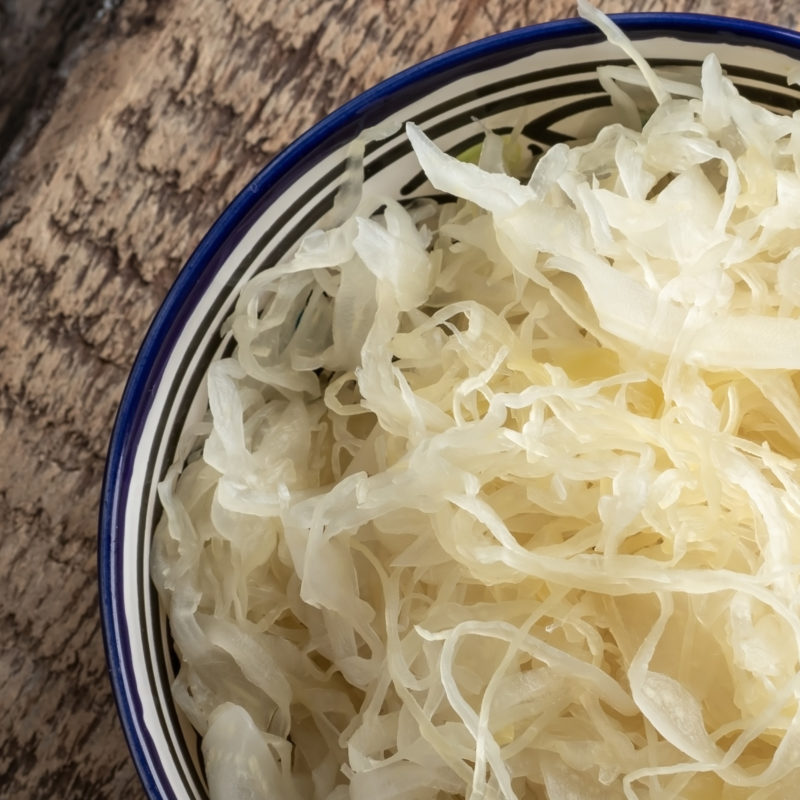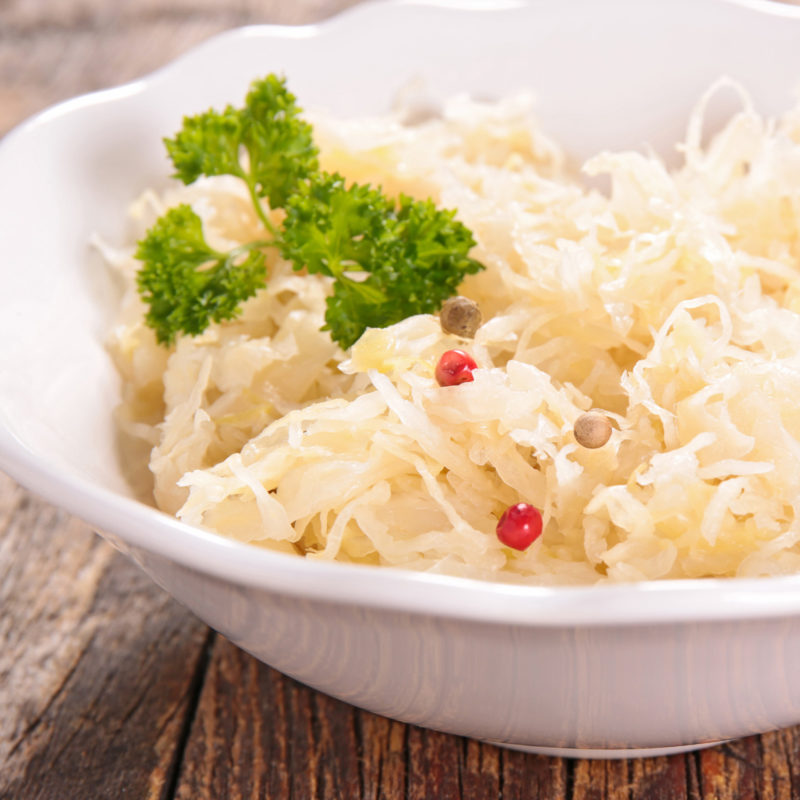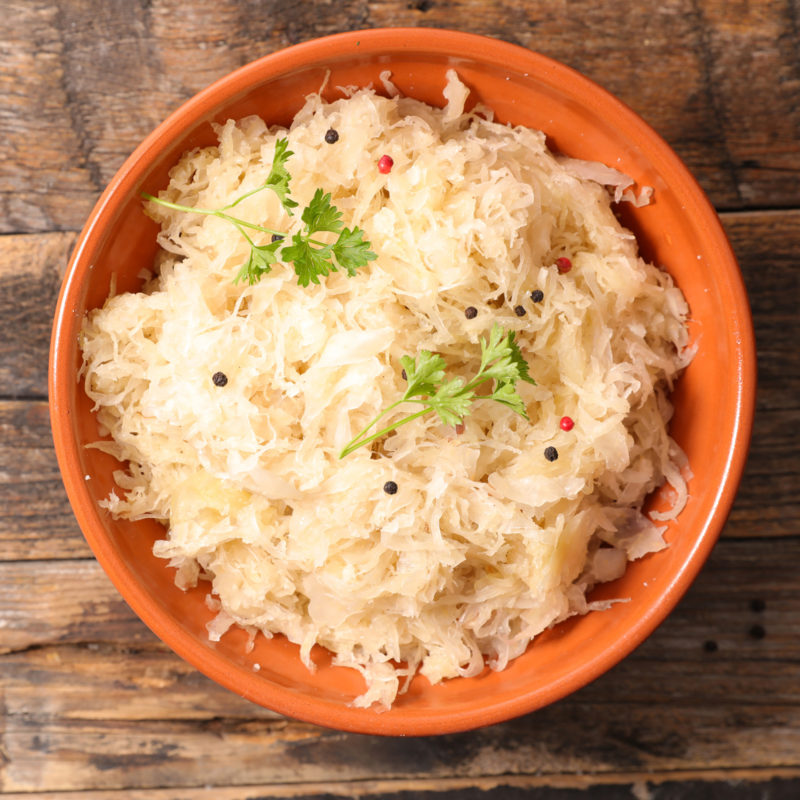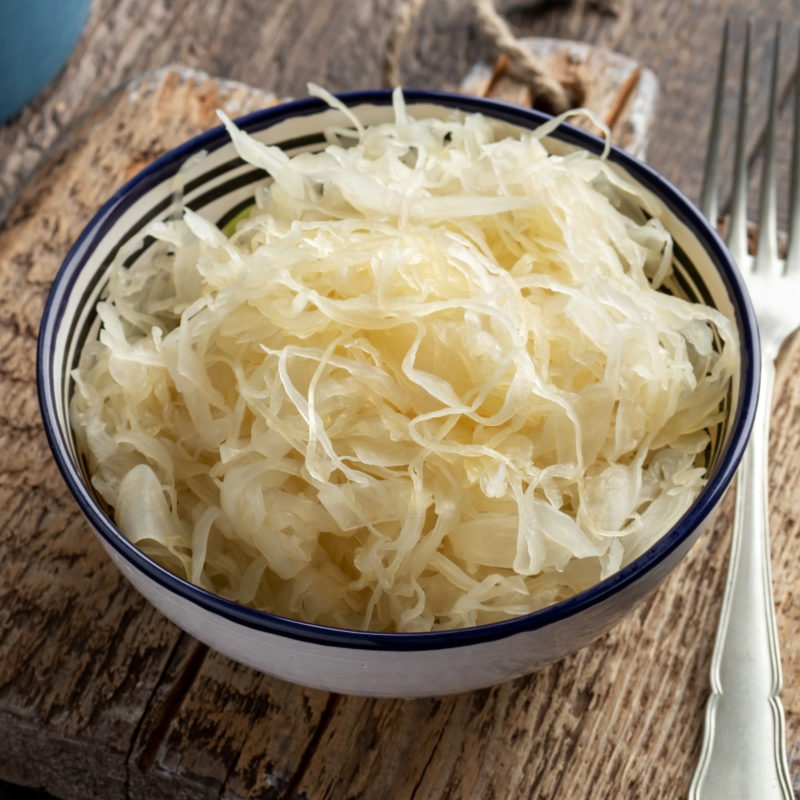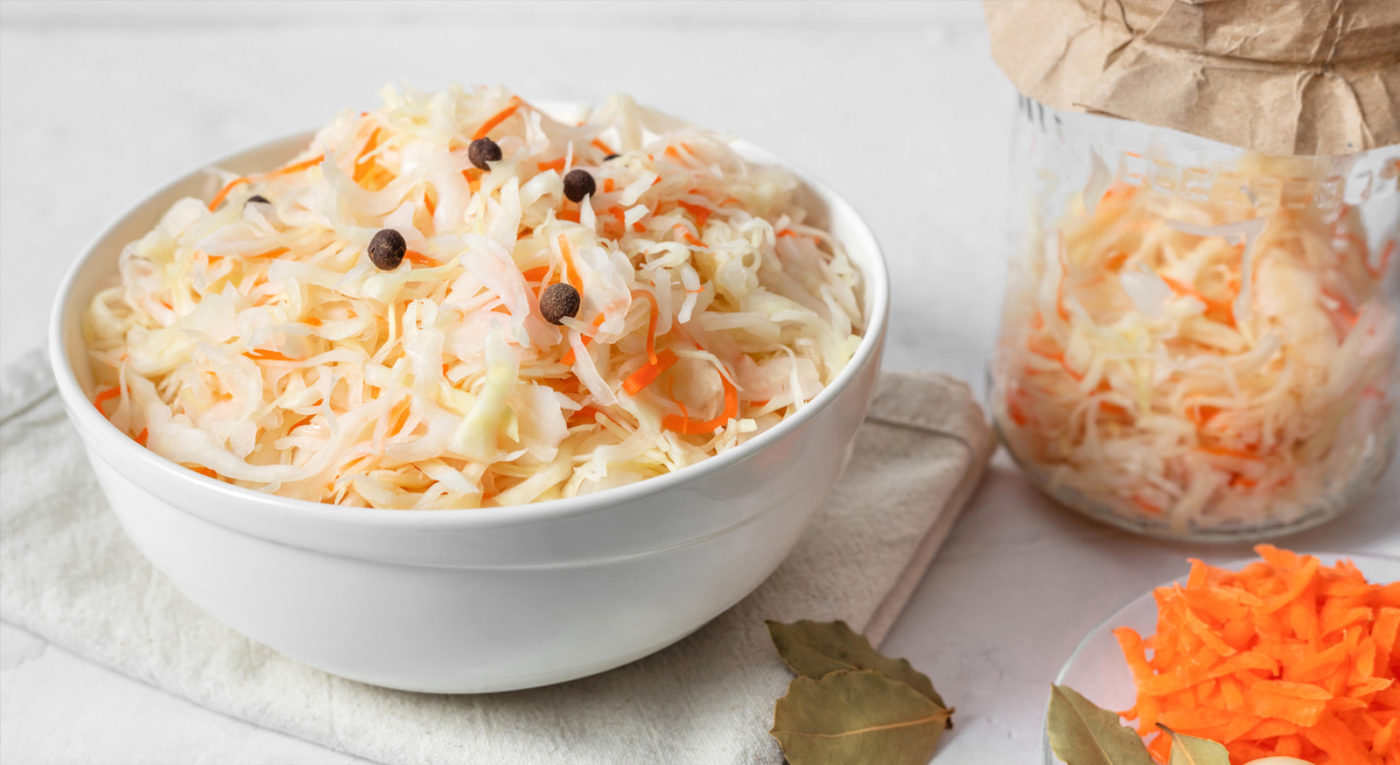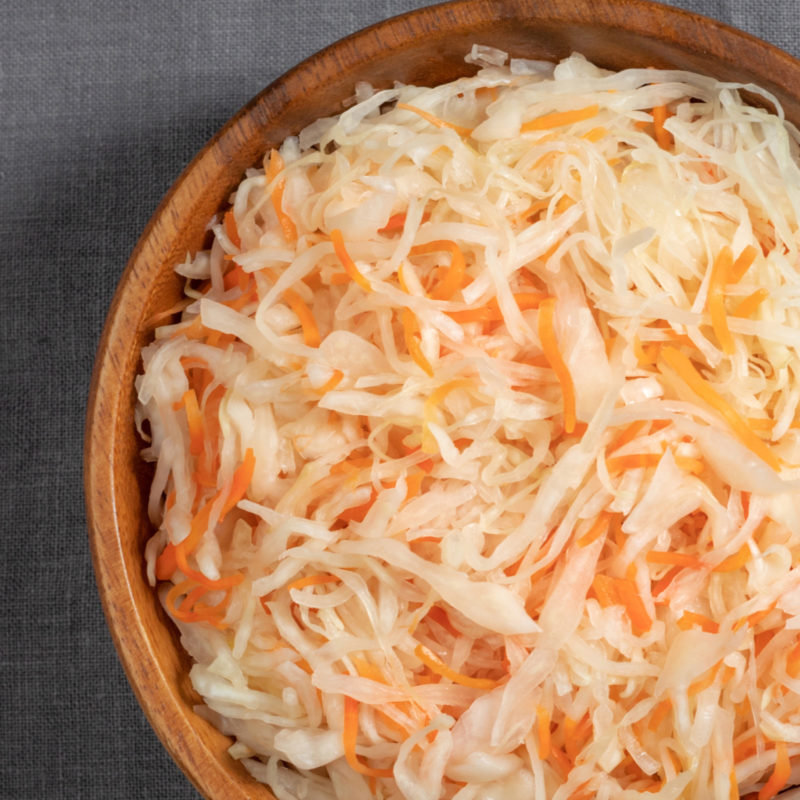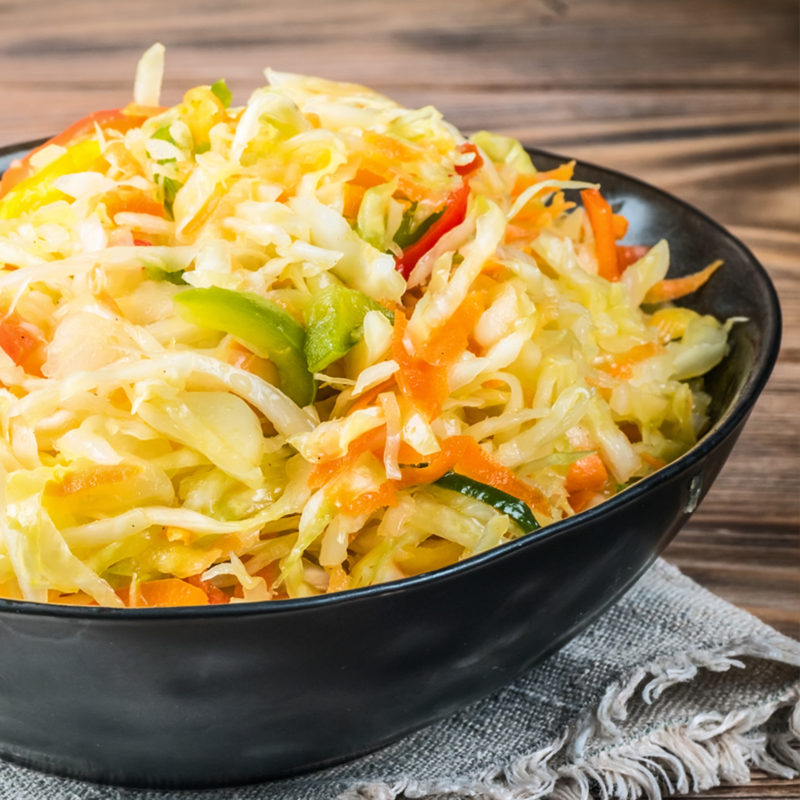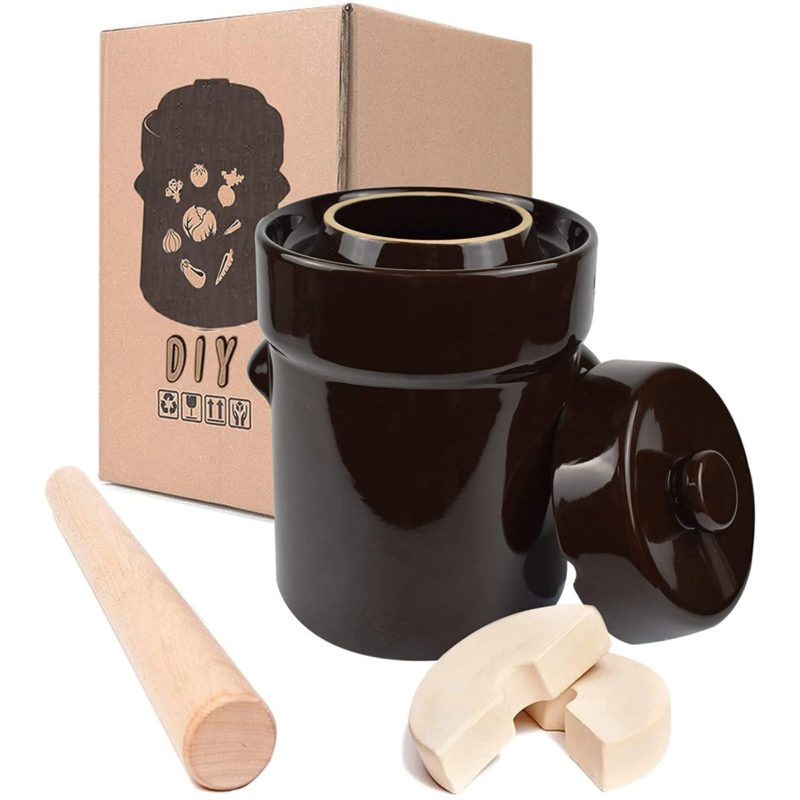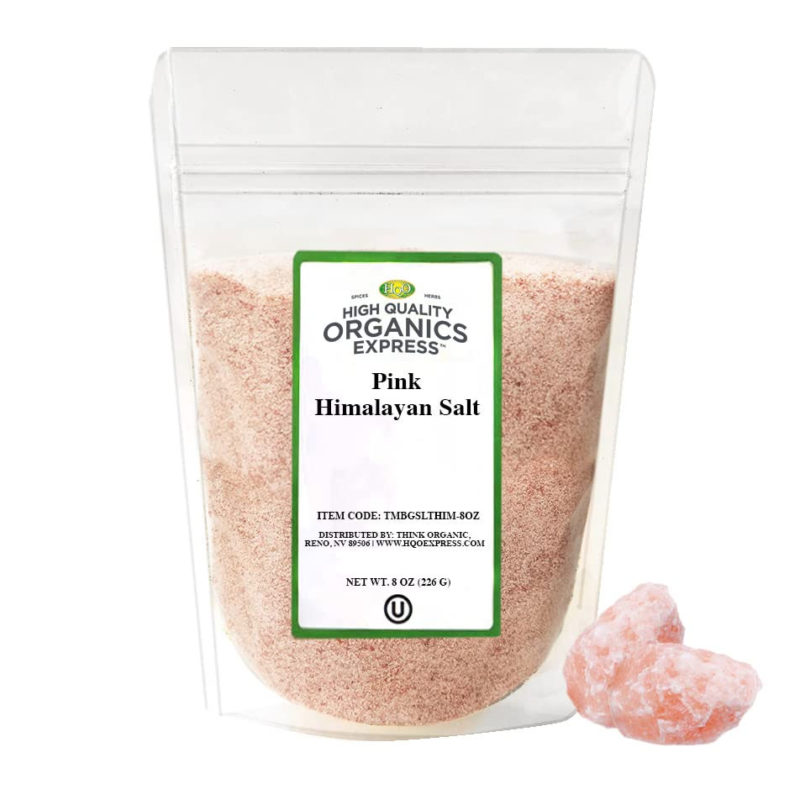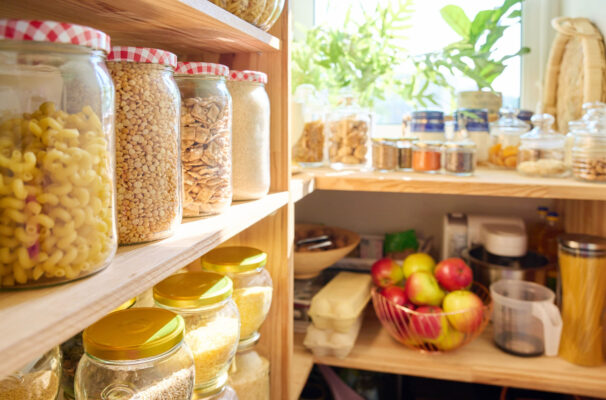I have been making sauerkraut all my adult life. I love it, especially in the fall and winter months. The health benefits of sauerkraut are well known, and the process of making it is very simple, intimate, and enjoyable. Homemade sauerkraut is an excellent addition of healthful probiotics to a lot of dishes. I love to top cooked veggies, rice, quinoa, or buckwheat, with it. Sometimes I eat it plain before and after meals for digestive boosting. Or make an easy sauerkraut salad by adding shredded carrots and olive oil.
There is a lot of information about the health benefits of fermented food and sauerkraut in particular. I will not elaborate much on this subject. However, just one fact I feel appropriate to mention here. All fruits and vegetables have a lot of gut-friendly bacteria present on the surface, and Lactobacillus (found in yogurt) is one of them. So the process of making sauerkraut is called Lacto-fermentation. Fermented sauerkraut contains a lot of the same healthy probiotics as a bowl of yogurt.
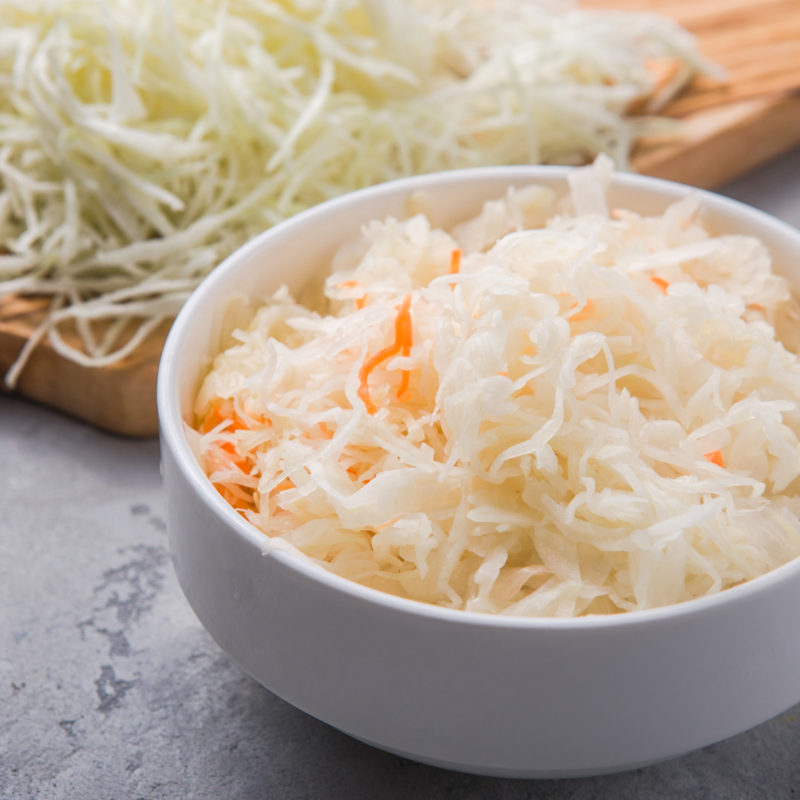
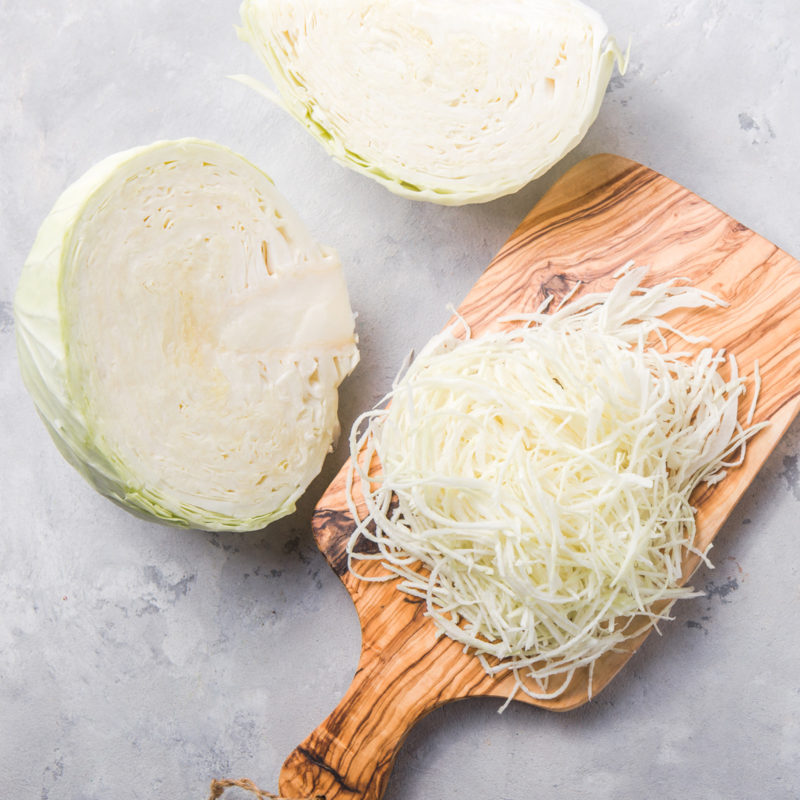
For most of my life, I have made sauerkraut in a clean ceramic dish or enamel pot. But then I discovered a ceramic fermentation crockpot, and it became my favorite way to make sauerkraut. Fermentation crockpot is nice and compact, sits back on my counter looking pretty. By far, the most convenient and hassle-free way to ferment. It is a sort of a “set-it-and-forget-it” type of deal. This particular method of sauerkraut making I’m sharing in the recipe you’ll find below.
The design of the fermentation crockpot’s airtight water-sealable top cover allows gasses to escape without letting oxygen in. That gives me the freedom to not constantly monitor the fermentation process (scraping off the surface mold, etc.).
The fermentation crockpot has perfect ecologic conditions for long-term food storage, and the specific thermal characteristics ensure good temperature stability inside the container, which significantly improves the final product’s taste.
But the truth is, there is no special equipment needed, really. If there is no way you can get your hands on a fermentation crock pot, you can still follow the recipe. Just pack your cabbage into a ceramic or enameled dish/pot. Place one of the clean larger outer leaves of the cabbage on the top. Weigh it down with a flipped-over flat plate and top it with clean stones or marbles, so all the cabbage and the plate are submerged in juice.
Important! If not using a fermentation crockpot. Cover the jar with a cotton cloth and secure it with a rubber band, ribbon, or rope to prevent dust or insects from getting into the Kraut while allowing proper air circulation.
Sauerkraut is an excellent addition of healthful probiotics to a lot of dishes. I love to top cooked veggies, rice, quinoa, or buckwheat, with it. Sometimes I eat it plain before and after meals for digestive boosting. Or make an easy sauerkraut salad by adding shredded carrots and olive oil.
Before we begin, I know it should go without saying, but I feel the need to bring it up – Cleanliness. Let’s remember we are about to populate some bacteria over here. So let’s breed the good ones.
It’s essential to keep your ceramic pots and stone weights absolutely clean. When choosing your cabbage, make sure to pick only the freshest produce. Vegetables (including cabbage) exposed to air will inevitably grow mold, so remember not to leave your veggies out too long before you ferment.
👩🏼🍳 THINGS I USED TO MAKE IT HAPPEN
These links will take you to a different website (like Amazon, etc.). If you purchase things you love using these links, I may receive a tiny commission that helps me to keep this project going at no extra cost to you. Thank you for supporting the Positive Pranic project.
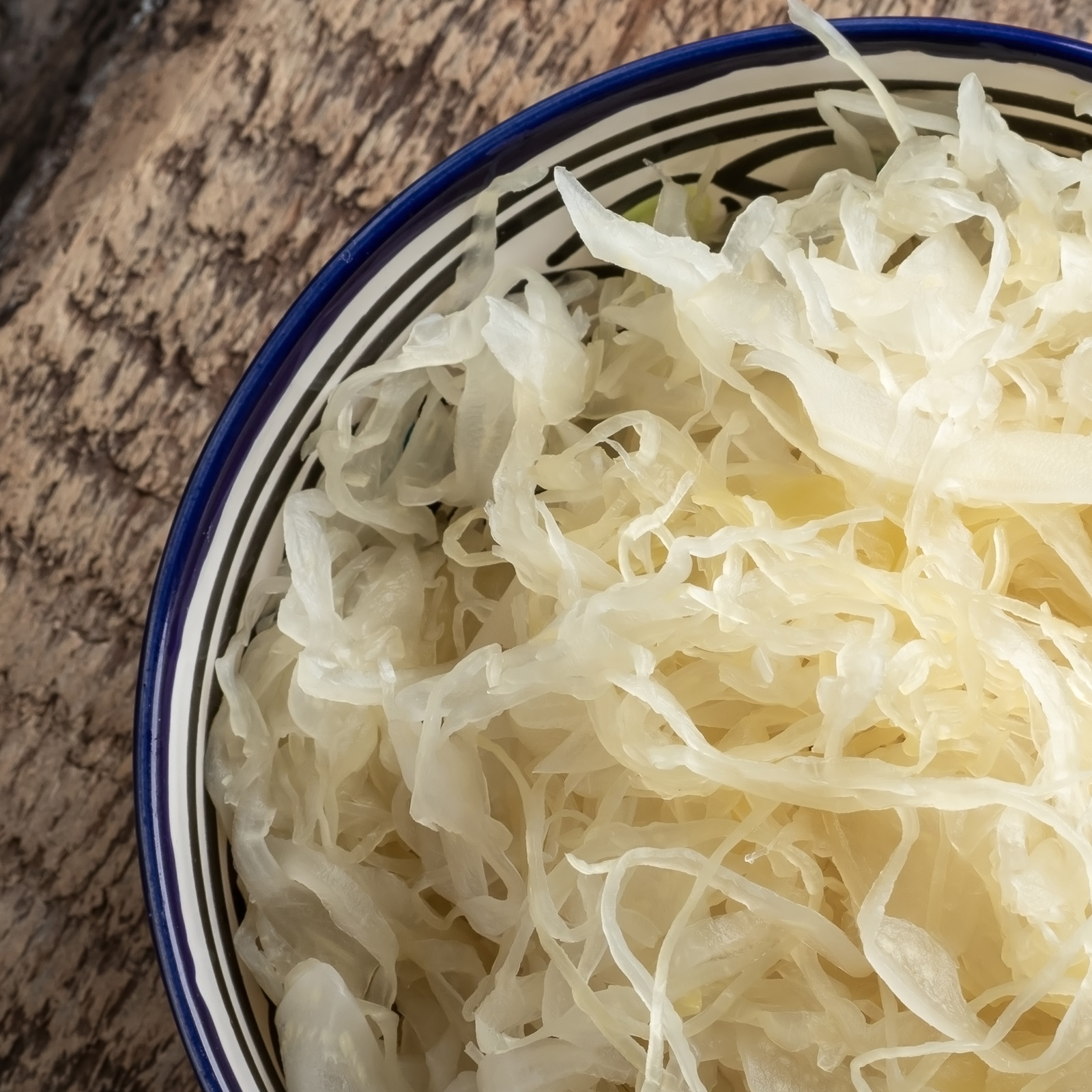
- ceramic fermentation crockpot
- 1 cabbage (large; 2 -2.5 pounds)
- 1 tbsp Himalayan salt
optional
- 1 tsp caraway seeds (or black pepper, ginger, seaweed, etc.)
- 1 tsp juice from your previous batch (of naturally fermented cabbage or other vegetables)
- Be sure to clean all appliances and hands thoroughly*
- Wash the cabbage and discard the outer leaves. Cut the cabbage lengthwise into quarters and remove the core. Slice the cabbage into very thin ribbons**
- Transfer cabbage into a bowl and add salt and optional seasonings (if using). Massage the shredded cabbage gently with clean hands until the natural juices are released.
- Transfer the shredded cabbage and juice into a clean ceramic fermentation crock and press down firmly using clean hands or tamper until liquid forms. You should have plenty of natural juice to cover the cabbage fully.
- Weigh down your cabbage with weighting stones so that they stay submerged under the brine during fermentation.*
- Cover with the lid. To ensure an airtight seal, add water into the water channel at the top after placing the lid on your pot. At the beginning of your fermenting process, it is crucial to sustain a tight seal so that no air penetrates the pot.
- Leave it out for 5-6 days. Do not open the lid during this time; be sure that the water channel is always filled.
- On the 5th day, open the lid and taste the sauerkraut. If the kraut is ripe and tangy, put a lid on it and store it in the fridge to halt fermentation. If not, cover with the lid, fill the water channel, and let it ferment longer. Taste periodically, and call it done when it's ripe to your liking.
- Transfer sauerkraut into a glass jar with an air-tight lid or an air-tight glass container. Store in the fridge for up to 3 months
Eat and Enjoy
- You can top cooked veggies, rice, quinoa, or buckwheat, with your sauerkraut. Eat it plain before and after meals for digestive boosting. Or make a sauerkraut salad by adding shredded carrots and olive oil.
What about you?
Did you try this recipe? If yes, let me know how it went. Leave a comment below and share a picture of your sauerkraut on Instagram with the hashtag @positivepranic #positivepranic, so I can see your beautiful creation 🙂 or join the Positive Pranic Facebook group and share your pictures and experiences there 🙏
Be Alive 🌱,
❤ Love, Julia











